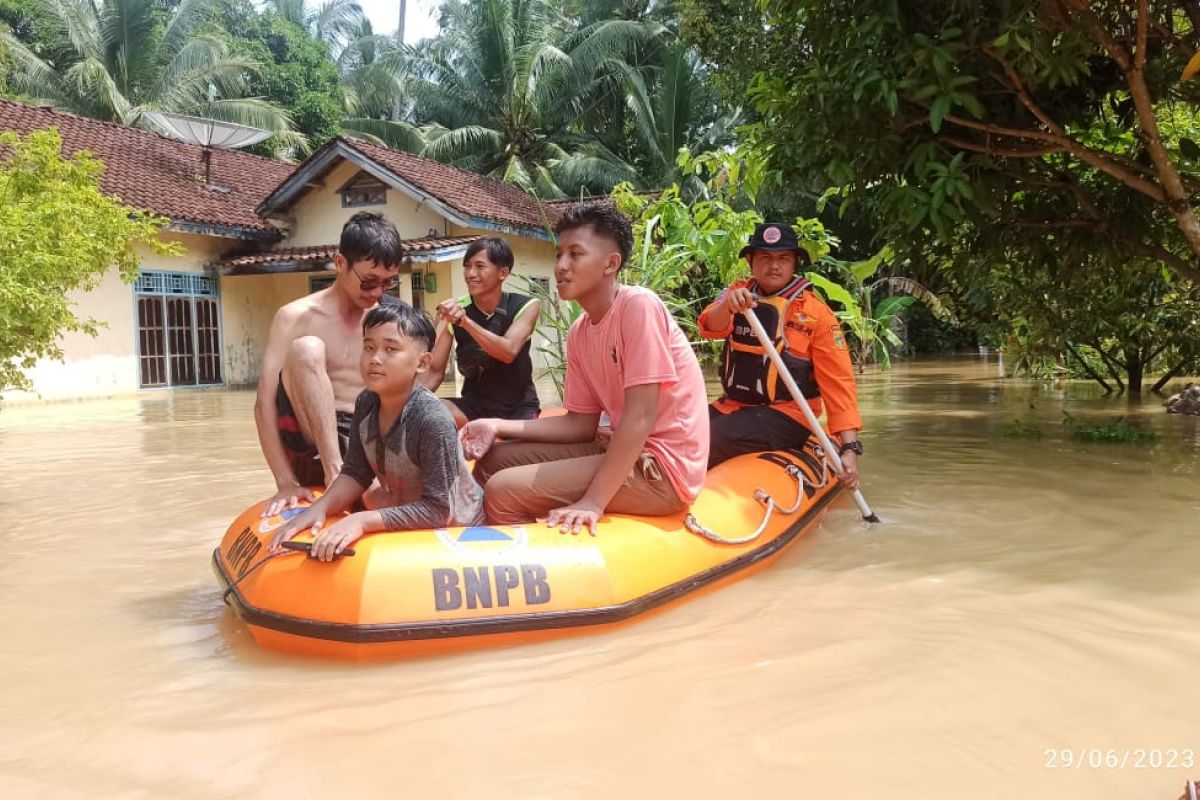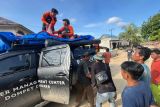Jakarta (ANTARA) - No casualties were reported in Tanggamus District, Lampung, following floods in the area at 4 a.m. Western Indonesia Standard Time (WIB/UTC+7) on Thursday (June 29, 2023), the National Disaster Mitigation Agency (BNPB) said.
"Some 1,252 families comprising 5,008 people were affected by the disaster," Acting Head of the BNPB’s Center for Disaster Data, Information, and Communication Abdul Muhari said in a statement received here Friday.
He informed that 1,252 houses were inundated in the flood, and two of them were washed away, while three others were seriously damaged.
According to the Regional Disaster Mitigation Agency (BPBD) of Tanggamus District, floods hit 10 villages in Semaka Sub-district after rain of high intensity fell in the area, he said.
The villages were Srikaton, Sukajaya, Kacapura, Sukaraja, Sidodadi, Bangunrejo, Sripurnomo, Pardawaras, Waykerap, and Sedayu.
Although the water level reached 80 centimeters, no residents were evacuated. They opted to stay in their respective homes. As of 6 p.m. WIB on Thursday, the water level had not declined.
The BPBD reported that some roads were still being cleaned of debris brought in by the floodwaters, such as rocks, mud, and wood.
"In addition, 149.45 hectares of agricultural land was inundated. Regarding public facilities, the BPBD noted that a gabion was heavily damaged, while 3 worship places as well as 2 educational facilities were inundated," Muhari said.
The BNPB appealed to local governments and residents to stay vigilant to anticipate more flooding.
Residents have been advised to evacuate independently or with the help of local officials if the water level starts to increase. The residents have also been asked to prepare a disaster emergency bag in case they need to take refuge, he said.
According to the American Red Cross, the bag should contain, among other things, water, non-perishable food, a flashlight, communication devices, sanitation items, a first aid kit, medicine, blankets, clothes, and copies of personal documents.
Meanwhile, local governments are required to prepare evacuation sites and basic services, such as public kitchens and health centers.










